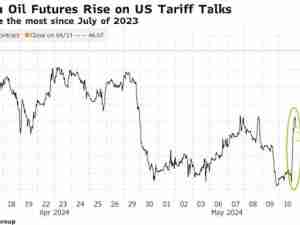Middling Exports Loom Over Last BoC Speech Before Rate Decision
By: Greg Quinn | Oct 05 2016 at 04:09 PM | International Trade
The Bank of Canada has one last speech to recast its forecast that exports will drive an economic recovery, before a crucial interest-rate decision later this month.
As recently as July, Governor Stephen Poloz and Senior Deputy Governor Carolyn Wilkins had advanced the idea non-energy exports would take over as the country’s main growth drivers. Since then, however, speeches from the bank’s highest-ranking policy makers have shifted to focus on the risks of tepid global growth and weakness in Canada’s exports.
Wilkins may elaborate on that weakness in a speech Thursday in Trois-Rivières, Quebec, two weeks before the Bank of Canada’s Oct. 19 interest-rate decision and quarterly policy report, which updates forecasts on growth, trade and business investment. Andrew Kelvin, rates strategist at Toronto-Dominion Bank’s TD Securities unit, said the slow recovery is likely to be reflected in the new forecasts.
“The rotation story has been happening in fits and starts for some time,” Kelvin said, adding he pays more attention to speeches close to policy meetings.
Doesn’t Materialize
TD predicts the central bank will keep its benchmark rate—currently 0.5 percent after two cuts last year—unchanged until early 2019. However the “single largest underlying risk to the Canadian economy is that the rotation of demand anticipated by the bank of Canada fails to materialize,” Kelvin and his colleague James Rossiter wrote in a note Wednesday.
Other risks that may cause the bank to cut rates include a deterioration in U.S. growth, lower inflation and a correction in the housing market, the analysts wrote.
Wilkins speaks on “Economic trends and monetary policy,” and the text of her remarks will be posted on the central bank’s website at 11:35 a.m.
Recent communications have been downbeat. Exports have “lost ground” and the balance of risks to inflation have “tilted somewhat to the downside,” the bank said in the statement accompanying its Sept. 7 rate decision. Poloz also said last week the economy would take three to five years to recover from the oil shock.
Statistics Canada’s latest trade report on Wednesday showed non-energy exports were virtually unchanged. The country’s core rate of inflation slipped to the lowest in two years, the agency said last month.
The central bank has said one reason shipments have been lackluster is because of weak business and residential investment in the U.S., hurting Canadian suppliers of lumber and steel.
“That’s kind of Canada’s wheelhouse,” said Benjamin Reitzes, a senior economist at BMO Capital Markets in Toronto. The problem for now is that “U.S. investment has been pretty terrible.”








